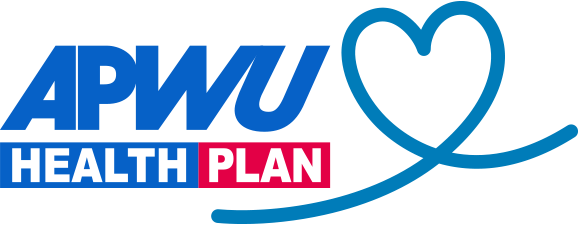It isn’t always easy to know where to go for medical care, especially when symptoms come on suddenly. Reviewing your options in advance can help you make an informed decision and save money. Before you wait for hours in the emergency department and end up with an expensive bill, take a few moments to consider the different types of healthcare providers and facilities available under your plan.
Everyone should have a primary care physician
Your family doctor—also known as a primary care physician—is your first and best option for medical care. The doctor you see for annual checkups, routine screenings, and immunizations understands your overall health and medical history.
Primary care physicians treat common conditions, like headaches and back pain, and also help patients manage chronic diseases such as high blood pressure, anxiety, and diabetes. Your doctor has a record of any allergies you have and medications or supplements you take.
If you haven’t seen a doctor lately, discover six reasons to get an annual checkup and find out why you need a primary care physician.
Many clinics offer same-day appointments. If you can’t get in to see your doctor when you’re sick or need care, there are other options.
Virtual visits let you see a doctor without leaving home
Virtual visits can be a great option when you want to ask a doctor about a minor medical concern from the comfort of home. With a virtual visit, you can see and talk to a doctor from your phone, tablet, or computer.
Doctors are available to treat a wide range of health conditions, including many of the same conditions treated in an emergency department or urgent care clinic. If you need medication, the doctor can send a prescription to your local pharmacy.
Virtual Visits are good for many conditions, including:
- Allergies
- Sore throats
- Bronchitis
- Colds
- Flu
- Migraines and headaches
- Pink eye
- Rashes
- Sinus infections
- Urinary tract infections
Decide ahead of time what device you’ll use for your virtual visit—a desktop computer, laptop, smartphone, or tablet. And make sure you have a reliable internet connection. Get more tips on preparing for a virtual visit.
Call a registered nurse by phone 24/7
With many health plans, you can speak to a registered nurse on the phone 24 hours a day, seven days a week. Often referred to as a 24/7 nurse line or nurse advisory service, registered nurses are available to answer your health questions, provide information about when to seek care, and discuss next steps.
Simply call the toll-free number listed in your ID card or plan documents. There is usually no additional charge to use this service.
Choose a convenient care clinic for walk-in healthcare
Convenient care clinics (or convenience care clinics) are usually located in a drug store, supermarket, or big box store and can save you time and money when you have a non-life-threatening medical condition, like a sinus infection or pink eye.
This type of walk-in clinic may not require an appointment or referral, but some locations will let you make an appointment online, so you don’t have to wait.
Most clinics have a single medical provider—often a nurse practitioner or physician assistant—so you may need to wait to be treated.
Go to urgent care for non-emergency treatment
If your symptoms need immediate attention or you have a minor injury, urgent care may be a good option when your regular clinic is closed for the day or the weekend.
Urgent care centers handle a range of medical issues that are not true emergencies but need to be treated right away, like a sprained ankle, minor burn, or ear infection.
Many people who go to the emergency department (or emergency room) for after-hours care would have been better off going to an urgent care clinic, so it’s important to understand the difference between urgent care and emergency care.
These clinics help fill a gap when you get sick or are injured, especially when your regular doctor is unavailable and you can’t wait for an appointment. However, urgent care centers typically work on a first-come, first-served basis, so you may have to wait to see a provider.
When to go to the emergency room
The hospital emergency department or emergency room (ER) focuses on treating medical emergencies. A medical emergency is any life-threatening situation that requires immediate assistance. If you think a situation is serious but aren’t sure it’s an emergency, call 911. It’s always best to be safe.
Call 911 or go to the emergency department if you experience any of these signs:
- Severe headache coupled with dizziness or blurred vision
- Sudden dizziness and loss of balance
- Fever higher than 100.4°F in babies under three months or over 104°F in adults
- Chest pain that radiates to the arm or jaw
- Difficulty breathing
- Open fracture where the bone punctures the skin
- Burns on the hands, face, feet, or genitals
- Heavy bleeding during pregnancy
Patients are often surprised by the bill after visiting the emergency department. If you’re experiencing life-threatening symptoms, call 911 immediately. But if it’s not an emergency, choosing another care option could save you time and money.
Making informed decisions can keep your out-of-pocket expenses under control. Discover seven ways to lower your healthcare costs.
Add medical contacts to your phone
An illness or injury can happen when you least expect it. Adding the following contact information (names, phone numbers, and addresses) to your phone can help make sure you’re prepared to respond:
- Your primary care doctor
- 24/7 nurse line
- Closest convenient care clinic
- Closest urgent care clinic
- Closest emergency department
Keep a list of the medications you take
Whenever you seek medical care—whether you have an appointment with your primary care physician or are heading to the ER—always bring a list of the prescriptions you take, including over-the-counter medicines, vitamins, and supplements. For each medication, write down how much you take and how often you take it.
Also, list any allergies you have, including any known allergies to medications, and any surgeries you’ve had. Note when they were performed and the names of the surgeons.
Being prepared and knowing where to go for care can help you get the most from your health benefits.
Call 911 immediately or go to the nearest emergency department if you believe you are experiencing a medical emergency.


